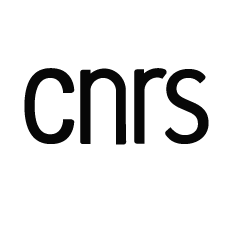Heterogeneous Catalysis Department
Department leader foreword
![[Translate to English:] Axel Löfberg, Directeur de Recherche CNRS [Translate to English:] Axel Löfberg, Directeur de Recherche CNRS](/fileadmin/_processed_/9/2/csm_76_47e2446f50.jpeg)
The heterogeneous catalysis (CH) department stems from the Laboratory of Catalysis of Lille (LCL) which, in 2006, became the founding member of the current UCCS alongside the Laboratory of Crystallochemistry and Physicochemistry of Solid (LCPS). The CH axis combines skills in synthesis, advanced characterization, molecular modeling and chemical engineering to address major societal issues such as sustainable development, energy and the environment by concomitantly developing fundamental research of a high level and innovations which are transferable to the industrial world. The axis is structured in 5 teams. Three thematic teams cover the fields of activity mainly related to chemical synthesis (biomass valorization, Fisher-Tropsh synthesis, use of CO2), preservation of air quality (VOC oxidation, DeNOx), and the production of clean or synthetic fuels. Two cross-cutting groups focus their research on the synthesis of catalytic materials on one hand and DFT calculations applied for both study of reactivity and simulation of spectroscopies data on the other hand. The axis also hosts the surface characterization platform (XPS, LEIS, Tof-SIMS), and is partner to ROCK beamline of SOLEIL synchrotron (XAS in-situ resolved in time) making advanced characterizations a central point of its activities. Beyond the triptych of synthesis-characterization-catalytic performance, the work carried out along the axis seeks to cover the entire catalytic process from the description of the active site to the implementation of catalytic systems in the most appropriate reactors and processes. To ensure an efficient technology transfer the axis is based on Realcat equipment, a high-speed platform, as well as the pilot Hall of catalysis (catalysis under pressure and real feedstock).
Presentation
The development and renewal of the chemical sector are linked to the development of heterogeneous catalysis, which is involved in major synthesis or chemical treatment processes. In order to protect our environment and sustainable development, these catalytic processes now take care to include a saving of energy and atoms, which can be achieved for example by a multidisciplinary approach via the coupling of different types of technologies or the implementation of hybrid catalysts. The advances and innovations proposed in the different research areas developed by the CH axis thus make possible to produce more environmentally friendly fuels, to synthesize new bio-sourced synthons able of competing with the petrochemical sector or to propose solutions for the treatment of air pollution. The CH axis has the skills and tools to address these different environmental and socio-economic challenges through an approach of better defining the active catalyst site architecture at the molecular scale and the mechanisms of reactions associated under complex reaction environment. The second pillar on which the CH axis strategy is based is to link the catalyst and its formulation to the engineering of its implementation in the processes. This global approach allows to maintain an important interface between the CH axis and the industrial sector.
Strategy
The heterogeneous catalysis axis combines skills in synthesis, characterization and processes to implement projects from the upstream phase (synthesis of functionalized hierarchical porous materials, replacement of noble metals), while integrating chemical engineering (reactor development) and the pre-industrial studies (Hall Pilot and REALCAT). This research approach is also based on advanced modeling and characterization resources adapted to in situ or operando analyzes (surface analysis platform, X-Ray absorption spectroscopy, EQUIPEX ROCK). The valorization of biomass and the rationalization of fossil resources use for chemical synthesis and energy, associated with the protection of the environment, constitute a large part of the research field of the Heterogeneous Catalysis axis. This research benefits from academic projects, PIA actions, the UMI CNRS-Solvay Site Miroir label, Euro-regional "Interreg" projects, European projects and industrial supports. Our strategy combines a demanding fundamental research approach with the will to promote our innovations by transfer to the industrial sector.


![[Translate to English:] Logo CATSUSCHEM](/fileadmin/_processed_/9/b/csm_Logo_Catsuschem_7051120edd.png)
